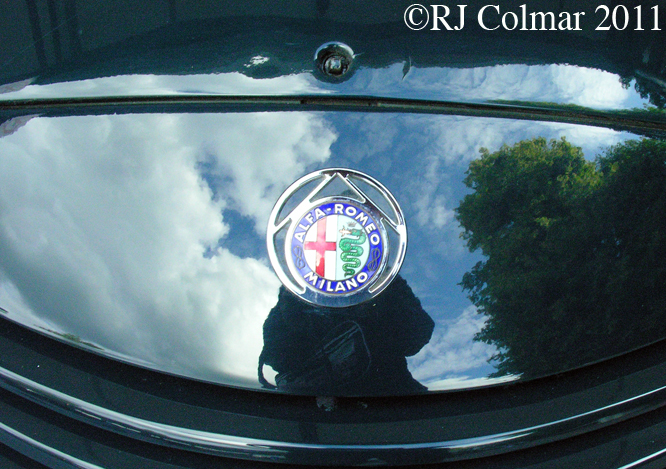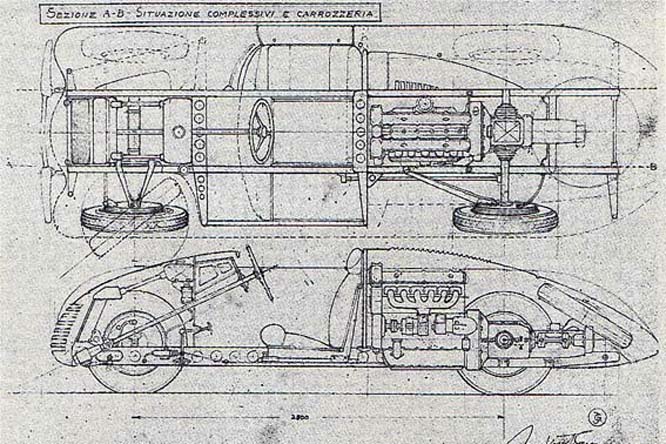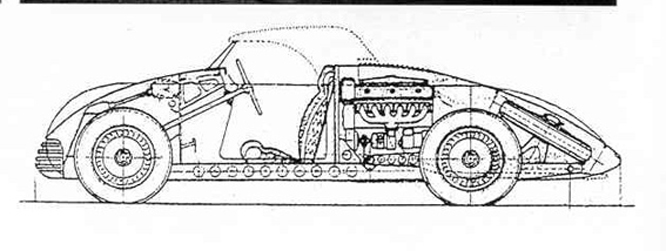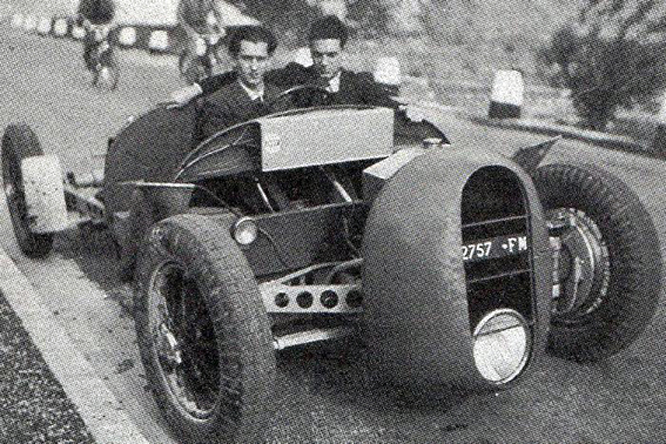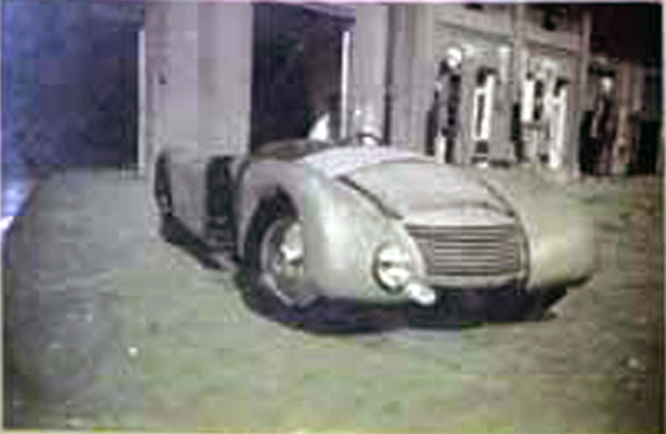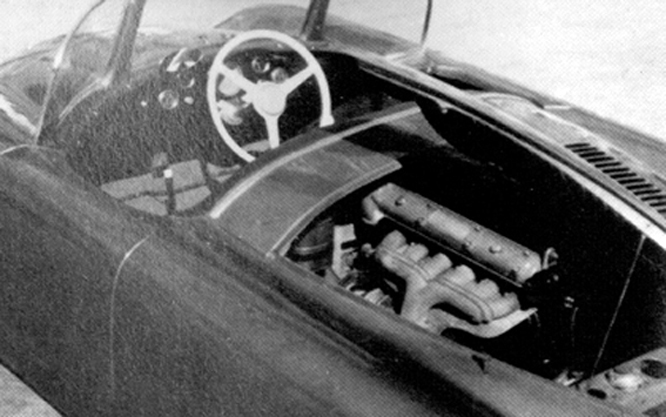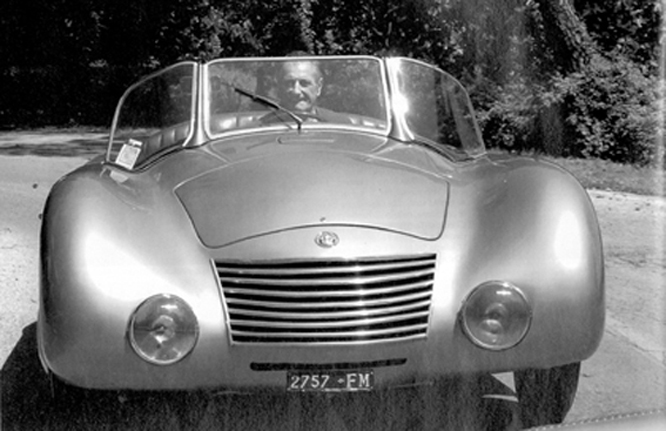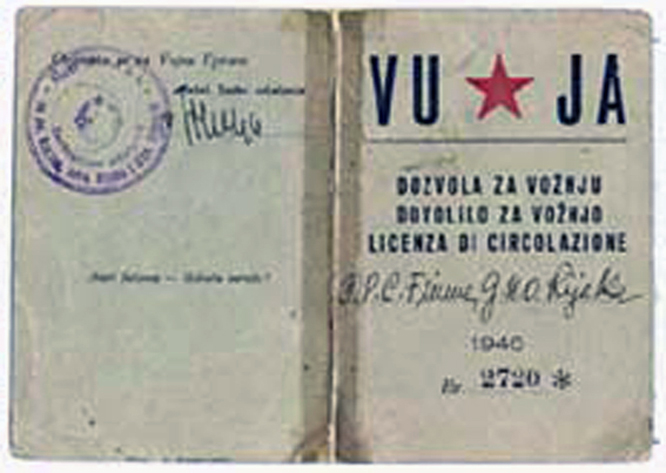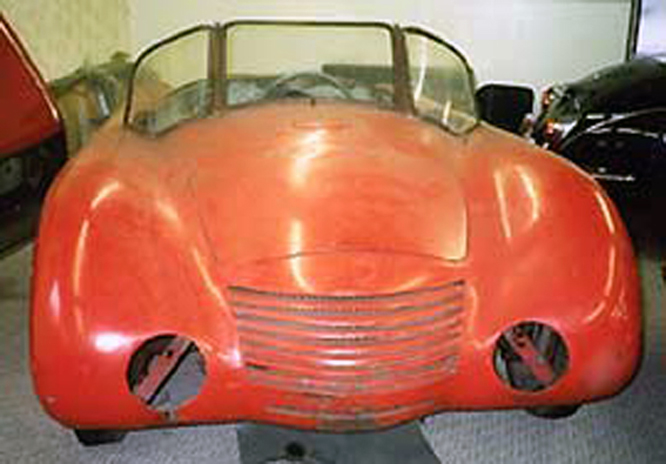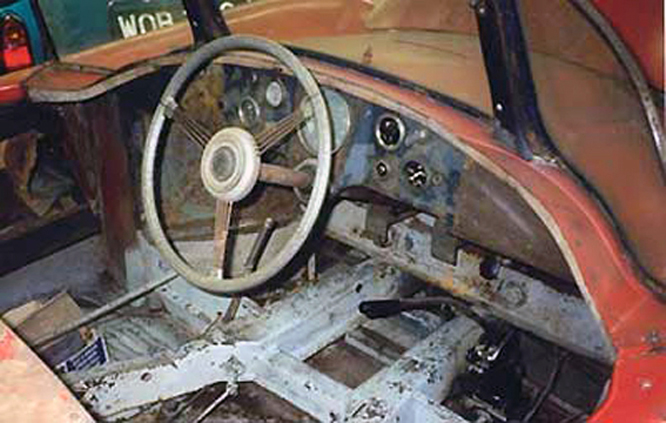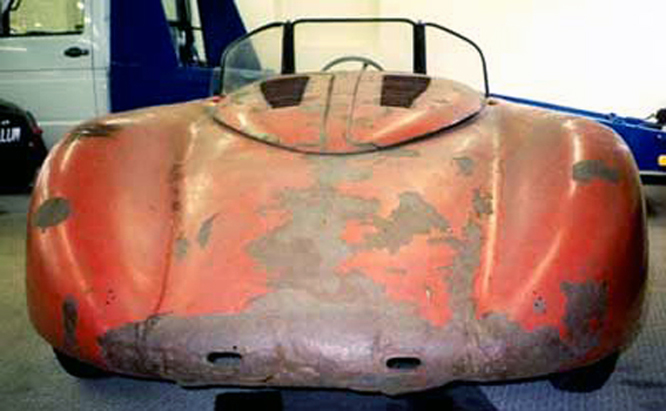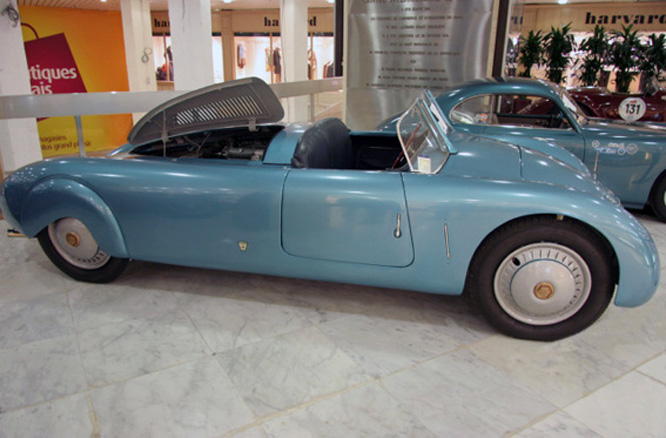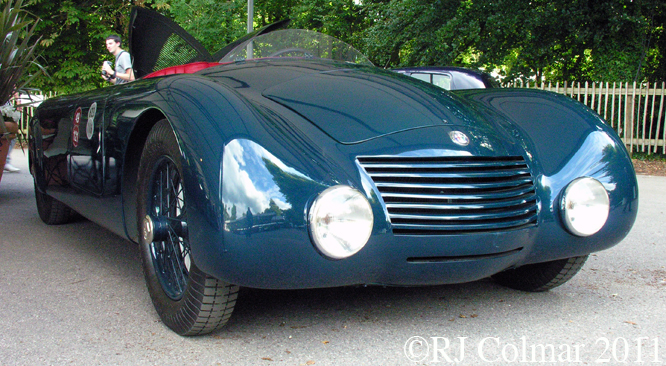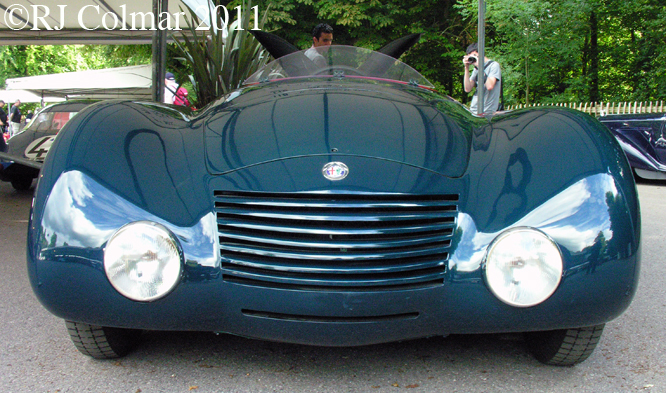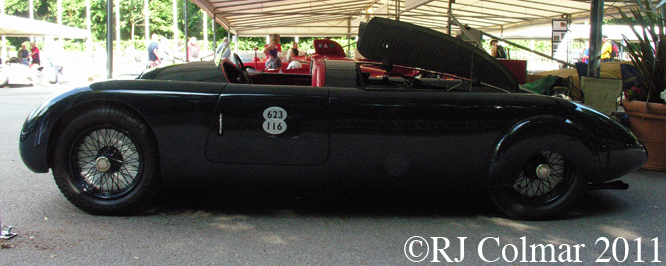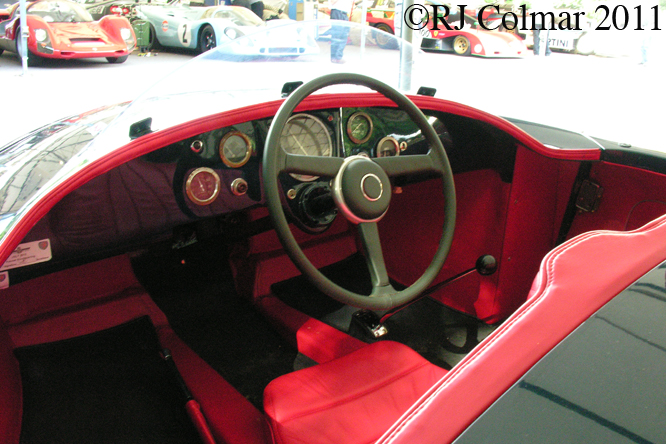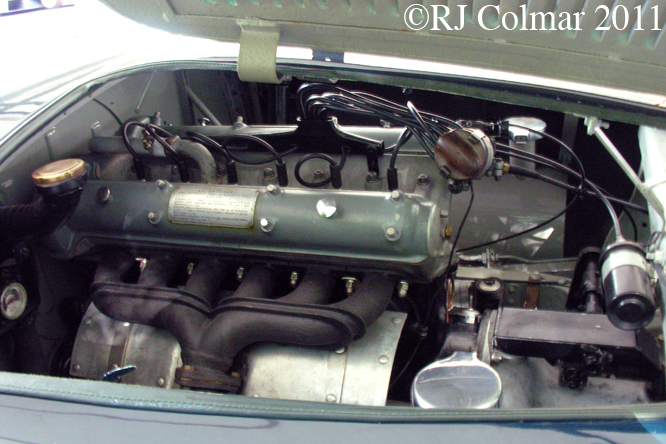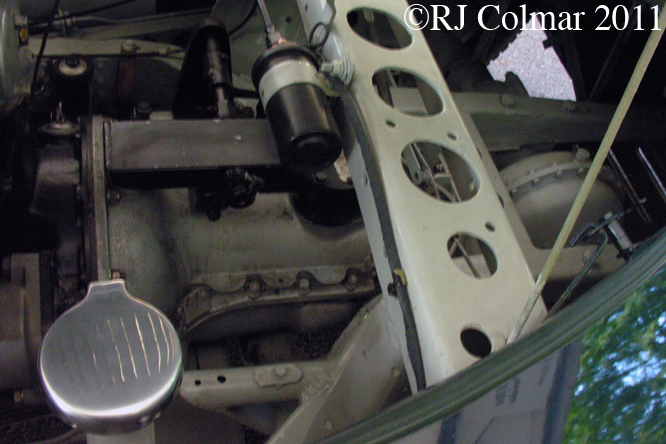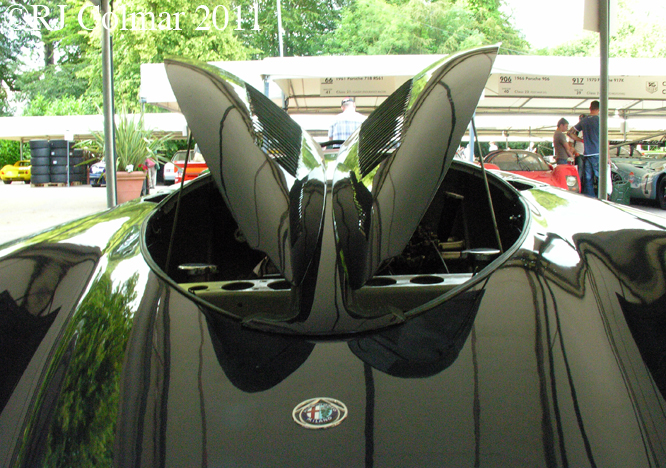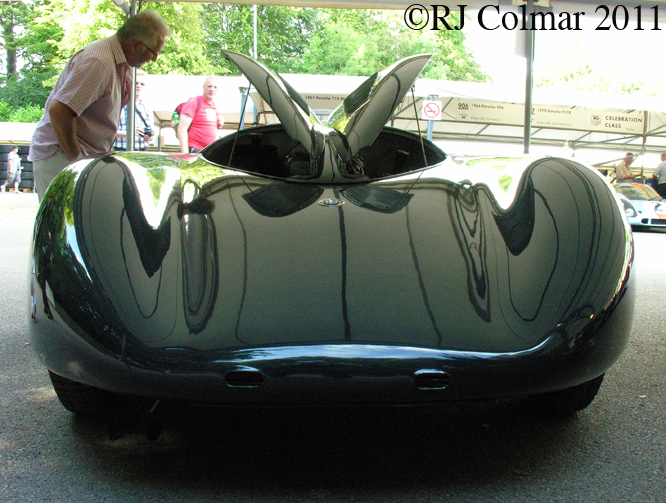I have been following the car featured in today’s blog for nearly a year and was pleasantly surprised to finally catch up with it at Goodwood Festival of Speed last week.
(Thought to be dated 1934 Copyright holder unknown, image will be correctly credited or removed upon request.)
Somewhere around 1934 two brothers Gina and Oscar Jankowits, with a background in architecture, from Flume on the Adriatic Coast then in Italy now in Croatia, set out to build an unusual car,
(Copyright holder unknown, image will be correctly credited or removed upon request.)
the two main distinguishing features of which were the mid engine rear wheel drive layout and a bench seat for three with the driver sitting in the middle.
(Thought to be dated 1937/8 Copyright holder unknown, image will be correctly credited or removed upon request.)
The chassis was built using C section lengths of steel, uses modified 1933 Buick brakes and modified 1935 Ford suspension, when it was completed the chassis was rigged up with rudimentary road going equipment and registered in Flume with the number 2757 – FM around 1938.
(Thought to be dated 1939/40 Copyright holder unknown, image will be correctly credited or removed upon request.)
The steel bodywork was then constructed,
(Copyright holder unknown, image will be correctly credited or removed upon request.)
and is thought to have been completed before the commencement of World War 2 hostilities in Italy.
(Copyright holder unknown, image will be correctly credited or removed upon request.)
For the duration of the hostilities the Jankowits was hidden away.
(Travel Permit Issued 24th December 1946)
After World War 2 Flume found itself in communist Yugoslavia and like many residents of the former Italian territory the Jankowits brothers obtained a permit, #2720, to visit Italy, on which a chassis number RO559 is hinted at, along with the ALFA Romeo engine number 700316, and did so never to return.
(Date unknown, Copyright holder unknown, image will be correctly credited or removed upon request.)
The brothers sold their car to a US Serviceman in Trieste who shipped it home. In 1967 Colin Crabbe the ‘Indiana Jones’ of finding long lost motor vehicles found the Jankowits in New York.
(Date unknown, Copyright holder unknown, image will be correctly credited or removed upon request.)
Not knowing what the vehicle was, but recognising the 6C ALFA Romeo motor, he contacted Luigi Fusi of the ALFA Romeo museum, who was familiar with all pre WW2 ALFA Romeo projects along with the people who worked on them
(Date unknown, Copyright holder unknown, image will be correctly credited or removed upon request.)
and was told that the Jankowits car was ‘nothing more than a special’. Eventually the car was sold to Malcolm Templeton in Nothern Ireland. Collector Neil Crabb no relation to Colin, then purchased the Jankowits and sold it to Phil Bennett in Leeds and during his ownership the car was shown at Beaulieu National motor Museum.
The Jankowits was restored in 2004 near Modena and entered into an auction in Paris (Lot 52) , however the known history, in particular the claims that it was an ALFA Romeo with a racing history were so shaky that it was withdrawn from the sale.
More recently the Jankowits has turned up at a number of events remade into a pseudo racer with ALFA Romeo badges replacing the previous crests of the Swiss ‘Graber’ coach builder.
The new owner is completely convinced this car was designed and built as an ALFA Romeo racing car despite the fact there is not a single shred of verifiable evidence that the car is either an ALFA Romeo or took part in any competition.
While the chassis was fitted with wire wheels when it was first registered all the photo’s of the car after it was fitted with it’s steel bodywork up until 2004 show the vehicle was fitted with hub caps, for more leisurely road use, as do what appears to be the original drawings of the car.
Much has been made of the central driver position and bench seat for three, this turns out to be a completely impractical solution as the steering is very heavy and passengers are forever getting poked by the drivers elbow’s while these idea’s predated vehicles like the McLaren F1 it should be noted that Gordon Murray had the forethought to move the passenger seats back relative to the drivers seat in his design.
It has been suggested that the absence of a speedometer hints that the vehicle was intended for racing however I suspect that if the car was registered for the road back in 1938 without one, it is possible that a speedometer was not a legal requirement for prototype or special vehicles in Italy at the time.
That the Jankowits brothers should choose to use a 6C 2300 ALFA Romeo motor for their vehicle is not in the least surprising apparently their father ran ALFA Romeo dealership.
As has been noted by several observers the rear transmission axle with the differential ahead of the gearbox suggested in the drawings was not realised in the car we see today with the gearbox being placed ahead of a Lancia differential. This compromise might account for an erroneous belief that the engine bay looks too large for the engine and suggests the wheel base on the car we see today is longer than originally intended.
Make no mistake this is a beguiling beautiful vehicle that hides many secrets but,
there is absolutely no evidence that this vehicle was ever part of the ALFA Romeo design program, to suggest so does a huge disservice to the Jankowits brothers who should be given all the credit for this futuristic if ultimately somewhat impractical design.
My thanks to the many contributors of the relevant threads at the Alfa bb, TNF, and alfisti.hr forums for providing the bulk of the information on today’s story and related photographs.
Hope you have enjoyed this Croatian edition of ‘Gettin’ a lil’ psycho on tyres’ and that you will join me again tomorrow for Ferrari Friday. Don’t forget to come back now !

